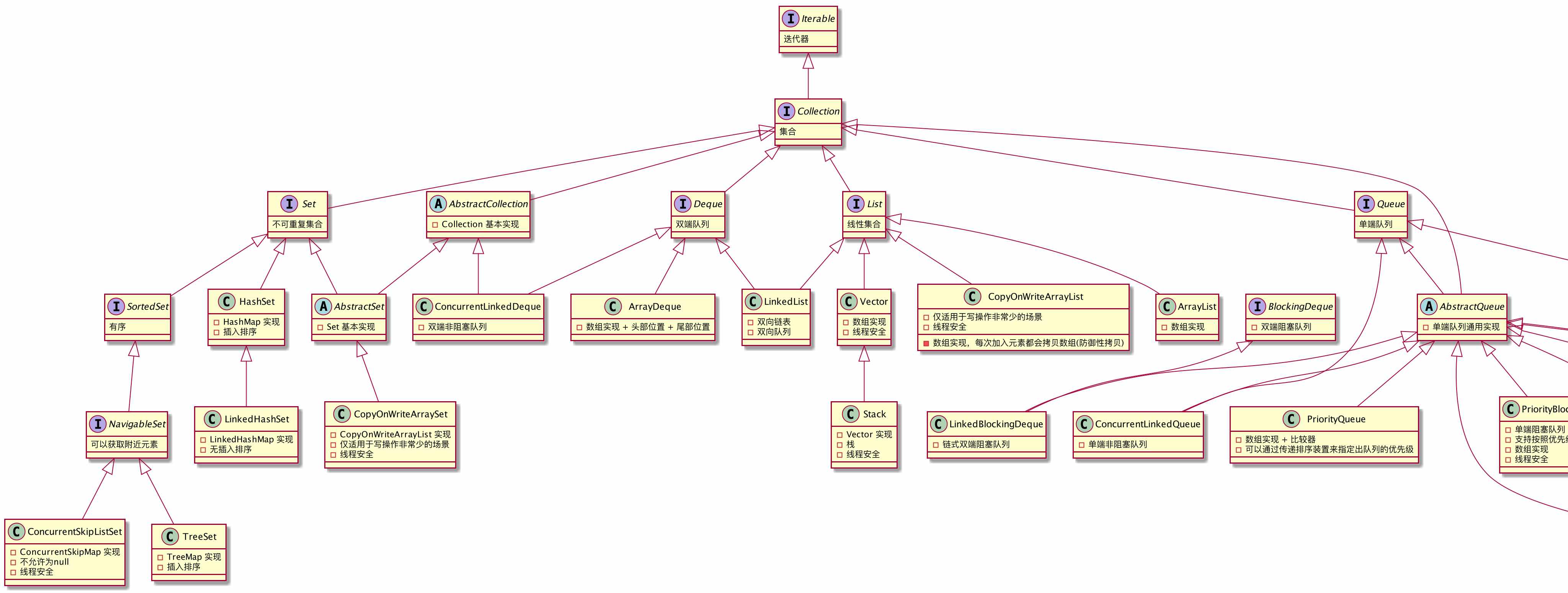关于Java常用数据结构,后期继续整理
List
List必须保持元素特定的顺序
LinkedList List、Queue
- 双链表
Node - 非线程安全的
- 转换为线程安全
Collections.synchronizedList(new LinkedList(...)); - 特点: 实现了List、Deque接口,双向链表,适合频繁插入/删除,不适合使用set、set。
ArrayList List
- 数组实现
- 非线程安全的
- 特点: 动态长度(默认长度为10,增长默认为当前长度的1/2,不可大于Integer.MAX_VALUE - 8,否则 OutOfMemoryError), get、set直接访问。
Vector List
- 线程安全
- 用
synchronized修饰函数
CopyOnWriteArrayList List
- 数组实现
- 线程安全
- 特点: 数组长度默认为0,每次修改都会重新增长长度和拷贝数组。
Stack
- 线程安全
- 数组实现
- 特点: 模拟栈。
工具类
- 转换为线程安全
Collections.synchronizedList(new ArrayList(...));- 内部是用List实现存储的
- 与
Vector差别是可以传入定制的锁。
- 转为不可变List
Collections.unmodifiableList(new ArrayList<>())- 门面模式(List)
- 线程安全
- 特点: 不可变。
常用技巧
1 |
|
Set
Set不能有重复元素
HashSet Set
- 线程不安全
- 利用 HashMap 的 Key 值进行存储。
- 无序
- 利用Hash存储,存取和查找高效。
LinkedHashSet Set
- 线程不安全
- 利用 LinkedHashMap 的 Key 值进行存储。
- 按插入排序
TreeSet Set
- 线程不安全
- 利用 TreeMap 的 Key 值进行存储。
- 插入有序, 默认自然排序。
Queue
Queue保持一个队列(先进先出)的顺序.
PriorityQueue Queue
- 线程不安全
- 数组实现
Deque Queue
- 双端队列
ArrayDeque Queue
- 数组实现
- 线程不安全
- 动态长度
BlockingQueue
DelayQueue
Map
用于保存具有”映射关系”的数据
HashMap
- 不能保证key-value对的顺序
- 线程不安全
LinkedHashMap
- 插入顺序
- 线程不安全
TreeMap
- 线程不安全
- 插入有序, 默认自然排序。
ConcurrentHashMap
- 线程安全
- 特点: 分多个块
整理了两张图

